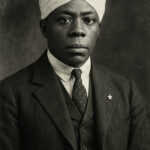Self-discovery involves using various tools like journaling, mindfulness, and personality assessments to enhance personal growth and understanding, ultimately helping individuals connect with their true selves and foster meaningful change in their lives.
Have you ever questioned your choices, feeling like they weren’t truly you? True self vs false self is a vital distinction to understand on your journey to authentic manifestation. Let’s explore how to break free from limiting beliefs and align with your deepest desires.
Jump to section
Understanding true self and false self
Understanding true self and false self is crucial for personal growth. The true self embodies your genuine feelings, desires, and values, while the false self often emerges from societal expectations and past experiences.
A common challenge is distinguishing between these two identities. Many people live with a false self due to external pressures. This persona can lead to confusion and dissatisfaction.
To navigate this journey, self-reflection is essential. Ask yourself questions like: What do I truly enjoy? or What makes me feel fulfilled?
Try journaling your thoughts and feelings. Regular writing can clarify your true desires, revealing the authentic you hidden beneath the false self.
Common signs of a false self
- Feeling unfulfilled or empty despite external success.
- Constantly seeking approval from others.
- Experiencing anxiety or unhappiness.
- Difficulty making decisions aligned with your true beliefs.
Recognizing these signs can be your first step towards embracing your true self.
The authenticity trap in modern life
The authenticity trap in modern life can feel overwhelming. Many of us face pressure to conform, often sacrificing our true selves to fit in. Social media intensifies this struggle by showcasing curated lives that seem perfect. This can create a false sense of what authenticity looks like.
Being authentic means embracing your true self, including your quirks and imperfections. It’s about being real, which can feel risky in a world that often rewards conformity.
To avoid the authenticity trap, start by identifying your core values. Ask yourself questions like: What truly matters to me? or How do I want to be remembered?
Practical steps to break free
- Reduce social media use — consider a digital detox.
- Engage in activities that bring you joy.
- Surround yourself with supportive people who value the real you.
By making these changes, you’ll nurture your authenticity and live a life that’s aligned with who you really are.
Recognizing false comfort

Recognizing false comfort can be pivotal in your journey toward authenticity. False comfort refers to the feelings of security or satisfaction that arise from habits, routines, or beliefs that don’t truly serve your best self.
Often, people cling to these comforts because they feel safe. This might include staying in a job that doesn’t fulfill you or remaining in unhealthy relationships. While these choices can seem comfortable, they can also hinder your growth.
To identify false comfort, ask yourself: Is this truly making me happy? or Am I just avoiding change? These reflective questions can shed light on areas where you may be settling.
Signs of false comfort
- Feeling bored or stagnant in your daily life.
- Relying on distractions like binge-watching shows instead of pursuing passions.
- Experiencing a sense of dread about the future.
Awareness is the first step. Once you recognize these patterns, you can start taking action to move toward genuine comfort and fulfillment.
Breaking free from limiting beliefs
Breaking free from limiting beliefs is essential for personal growth. Limiting beliefs are powerful thoughts that constrain your potential. They often stem from past experiences, societal norms, or negative self-talk.
To recognize these beliefs, pay attention to your inner dialogue. What do you tell yourself when facing a challenge? If thoughts like I can’t or I’m not good enough arise, you may be encountering a limiting belief.
Here are some steps to help you break free:
Steps to challenge limiting beliefs
- Identify the belief: Write down negative thoughts as they come up.
- Question its validity: Ask yourself, Is this really true?
- Find evidence: Look for instances where you succeeded despite this belief.
- Replace with positive affirmations: Use statements like I am capable or I deserve success.
By actively challenging and changing these beliefs, you can unlock your true potential and open doors to new opportunities.
Practical steps for transformation
Practical steps for transformation can guide you toward a more authentic life. Change doesn’t happen overnight, but with small, consistent efforts, you can create a profound impact.
Here are some actionable steps to help you on your transformation journey:
Steps to consider
- Set clear goals: Define what transformation means to you. Write down specific, achievable goals.
- Create a plan: Break your goals into smaller, manageable steps. This makes change less overwhelming.
- Stay accountable: Share your goals with friends or join a community. Accountability can keep you motivated.
- Practice self-care: Take time to nurture your mental and physical health. Prioritize activities that rejuvenate you.
- Reflect regularly: Set aside time to assess your progress. Adjust your plan as needed.
By consistently applying these steps, you can pave the way for meaningful transformation in your life.
Integrating mind and body

Integrating mind and body is a crucial part of personal wellness. When your mind and body work together, it enhances your overall health. This connection can help reduce stress, improve focus, and increase your emotional resilience.
Here are some effective ways to foster this integration:
Techniques for alignment
- Practice mindfulness: Engage in activities like meditation or deep breathing. This helps clear your mind and reconnect with your body.
- Incorporate movement: Try yoga or tai chi. These practices combine physical movement with mental focus, enhancing body awareness.
- Listen to your body: Pay attention to physical sensations and emotions. This awareness can guide you in making healthier choices.
- Establish a routine: Create habits that balance both mental and physical activities, such as regular exercise combined with relaxation techniques.
By merging your mind and body, you can achieve a greater sense of balance and fulfillment in daily life.
Daily practices for alignment
Daily practices for alignment can help you connect your mind and body. Establishing a routine centered on mindfulness and wellness enhances your overall well-being. Here are some practical practices to consider:
Effective daily habits
- Morning meditation: Start your day with 5-10 minutes of meditation. This helps clear your mind and set intentions.
- Gratitude journaling: Spend a few minutes each day writing down what you’re grateful for. This can shift your focus to positive aspects of life.
- Mindful movement: Incorporate gentle activities like yoga or stretching to harmonize your body and mind.
- Breathing exercises: Take short breaks throughout the day to practice deep breathing. This helps reduce stress and refocus your energy.
- Reflect on your day: Before bed, reflect on your experiences and feelings. This promotes awareness and helps consolidate your thoughts.
By integrating these simple practices into your daily routine, you can achieve greater alignment and peace in your life.
Success stories of transformation
Success stories of transformation provide inspiration and motivation for anyone seeking change. Hearing about others’ journeys can help you see what’s possible in your own life.
Here are a few remarkable stories that highlight the power of personal transformation:
- Amanda’s journey: After years of feeling stuck in a corporate job, Amanda decided to pursue her passion for cooking. She enrolled in culinary school and launched a successful catering business, transforming her life.
- James’ fitness transformation: Battling obesity, James started a health journey by setting small goals. With consistent workouts and improved nutrition, he lost over 100 pounds. Now, he helps others with similar struggles.
- Maria’s mindfulness path: Dealing with anxiety, Maria turned to mindfulness practices. Through meditation and yoga, she gained clarity and confidence, reshaping her mental health and quality of life.
These stories illustrate that transformation is achievable. With dedication and the right mindset, you can create significant change in your life.
Tools for deeper self-discovery

Tools for deeper self-discovery can help you understand yourself better and uncover your true potential. Using various methods can enhance your journey of self-exploration.
Here are some effective tools to consider:
Self-discovery tools
- Journaling: Writing down your thoughts and feelings can clarify your emotions. It helps identify patterns in your behavior and beliefs.
- Personality tests: Tools like the Myers-Briggs Type Indicator (MBTI) can provide insight into your personality traits. Understanding your type can enhance self-awareness and relationships.
- Mindfulness meditation: Regular practice encourages you to observe your thoughts without judgment. This helps in understanding your mental processes more clearly.
- Coaching or therapy: Working with a professional can provide support and structured guidance through your self-discovery journey.
- Vision boards: Creating a visual representation of your goals and dreams can inspire you and clarify your desires.
Incorporating these tools into your routine can significantly enhance your journey toward self-awareness and personal growth.
Wrapping up
Self-discovery is a journey we all embark on at our own pace. Using tools like journaling, personality tests, and mindfulness can deepen your understanding of yourself. Each of these practices opens the door to greater awareness and personal growth.
Remember, everyone’s path is unique, and that’s perfectly okay. The key is to find what resonates with you and allows you to explore your true self more fully.
As you reflect on your journey, consider this: What small step can you take today to honor your need for self-discovery? Every little action counts.






